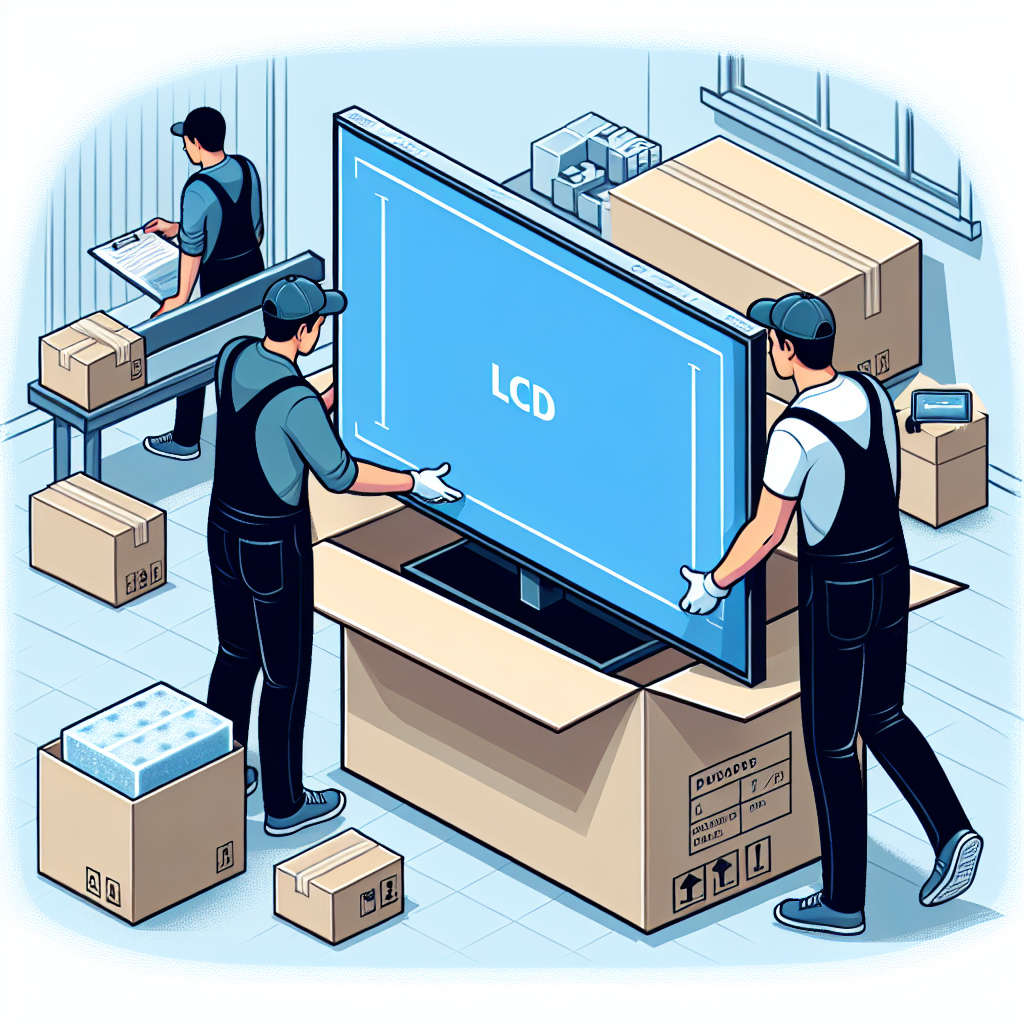
Transporting an LCD monitor can be a delicate task. These devices are not only fragile but also expensive, making proper handling essential to prevent damage. Whether you’re moving to a new home, shipping the monitor to a customer, or simply taking it to a different room, certain steps must be followed to ensure it arrives safely and in perfect working condition.
1. Gather the Necessary Materials
Before you start packing, it’s crucial to have the right materials on hand. This can make the difference between a safe transport and a damaged monitor.
- Original monitor box or a sturdy box of similar size
- Bubble wrap
- Packaging tape
- Foam sheets or padding
- Antistatic bag
- Labeling markers
Packing Materials Chart
| Material | Purpose |
|---|---|
| Original Box | To provide a precise fit and added protection |
| Bubble Wrap | To cushion the monitor and absorb shock |
| Packaging Tape | To seal the box securely |
| Foam Sheets | To offer additional padding |
| Antistatic Bag | To protect from static damage |
| Labeling Markers | To indicate that the box contains fragile items |
2. Disconnect and Prepare the Monitor
Follow these steps to prepare your monitor for transport:
- Turn off the monitor and unplug all cables.
- Remove the monitor stand or base if possible.
- Clean the screen gently with a microfiber cloth to remove dust and fingerprints.
- Place the monitor in an antistatic bag to prevent static damage.
3. Properly Pack the Monitor
The next step is to pack the monitor securely. Here’s how you can do that:
- Place a layer of foam or padding at the bottom of the box.
- Wrap the monitor in bubble wrap or foam sheets, securing it with tape.
- Place the wrapped monitor into the box, ensuring a snug fit.
- Add additional padding around the monitor to fill any gaps.
- Place the monitor stand in the box, if applicable, ensuring it is also wrapped securely.
- Seal the box with packaging tape, ensuring all seams are secure.
- Label the box as “Fragile” and “This Side Up” to indicate proper handling.
4. Choose the Right Transportation Method
The method of transport is also important to ensure the safety of your monitor:
- Personal Vehicle: If transporting the monitor yourself, place it in the back seat or trunk, secured with seat belts or other restraints to prevent movement.
- Moving Truck: If moving to a new home, inform the movers about the fragile nature of the monitor and ensure it is placed upright and securely.
- Shipping Services: For long-distance transport or shipping to a customer, choose a reliable courier service that offers insurance and tracking. Opt for services that specialize in handling fragile items.
5. Monitor the Environment
Environmental factors can also affect the safety of your monitor during transport:
- Keep the monitor away from extreme temperatures, as they can damage the screen and internal components.
- Avoid exposing the monitor to moisture. If shipping, ensure the package is waterproof.
- Handle the monitor gently to prevent any physical damage from drops or impacts.
6. Inspection Upon Arrival
Once the monitor has reached its destination, inspect it immediately for any signs of damage:
- Check the box for any dents or tears that may indicate mishandling.
- Carefully remove the monitor and unwrap it, inspecting the screen and body for any cracks or scratches.
- Plug in the monitor and ensure it powers on and functions correctly.
If you notice any damage, contact the transportation or shipping company immediately to file a claim.
Conclusion
Transporting an LCD monitor requires careful planning and the right materials to ensure it remains safe and functional. By following these detailed steps, you can minimize the risk of damage and ensure your monitor arrives at its destination in perfect condition. Whether you’re moving, shipping, or simply relocating the monitor, taking these precautions will give you peace of mind knowing your valuable device is well-protected.
